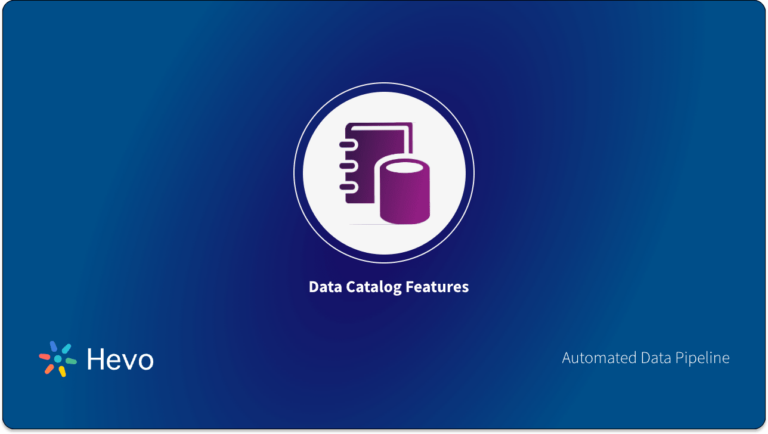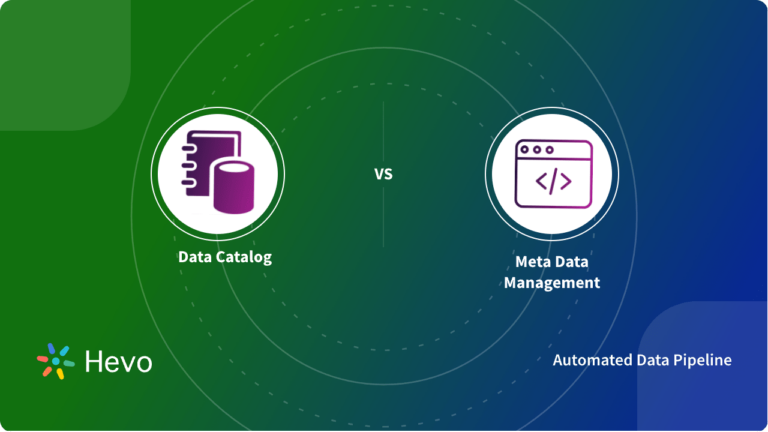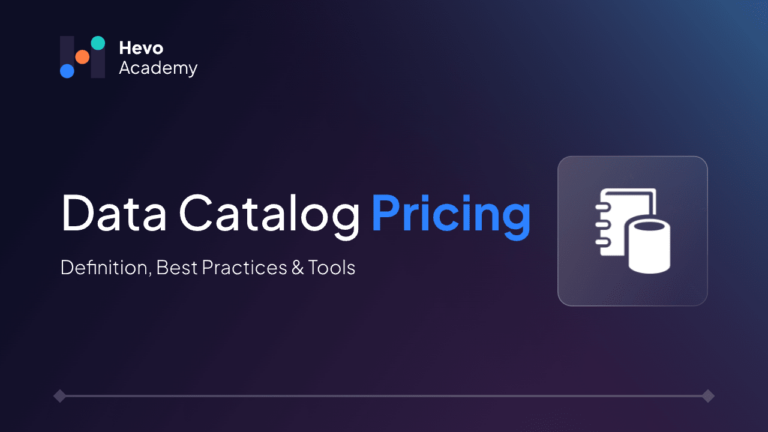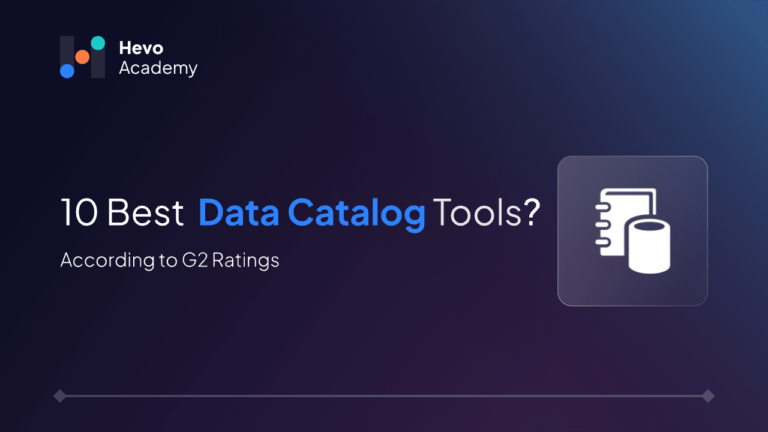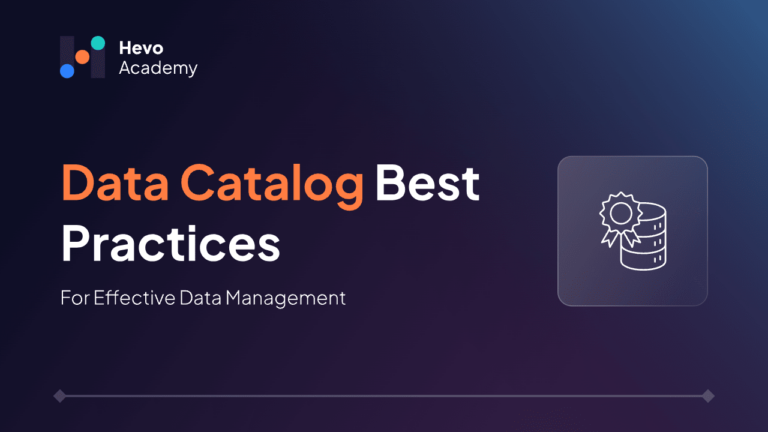A lot of data catalog tools are available in the market, so it is difficult to pick the best one that matches your requirements. Manually integrating and implementing various tools to fulfill every demand gets difficult and inefficient. Hence, having a thorough understanding of the fundamental data catalog features becomes crucial to judge what tool fits all of your needs.
Table of Contents
It is essential to have these features in a data catalog to efficiently manage and access extensive amounts of data. A detailed list of data assets simplifies the processes of locating, comprehending, and overseeing data.
In our article, we examine the 7 key aspects of a data catalog that you should consider based on your individual requirements. Recognizing these traits is crucial for implementing the right tools and tactics. What is the cause? Your organization can successfully enhance operational efficiency by managing data effectively through the utilization of accurate data catalog attributes.
Looking for the best ETL tools to connect your data sources? Rest assured, Hevo’s no-code platform helps streamline your ETL process. Try Hevo and equip your team to:
- Integrate data from 150+ sources(60+ free sources).
- Utilize drag-and-drop and custom Python script features to transform your data.
- Risk management and security framework for cloud-based systems with SOC2 Compliance.
Try Hevo and discover why 2000+ customers have chosen Hevo over tools like AWS DMS to upgrade to a modern data stack.
Get Started with Hevo for FreeWhat exactly is a Data Catalog?
A data catalog serves as a comprehensive guide for all the data within a company, allowing users to find and comprehend various data sets through information on each data asset, including its location, ownership, and potential usage. For instance, Google Cloud Data Catalog is a tool that helps users quickly discover and manage their data on Google Cloud Platform. To learn more about Data Catalog, you can visit our blog: What is a Data Catalog – Why it Matters?
Benefits of a Data Catalog
Organizations expand, and their data does, too. Having a data catalog in place allows your team to work more efficiently by discovering and accessing the data they require more quickly, saving time and resources. Having quicker and more accurate access to data will provide you with a competitive advantage and improve your decision-making. Additionally, teams may work together more effectively because a data catalog facilitates data sharing and handling between departments.
Maintaining your business’s efficiency, simplified operations, and competitiveness requires all of this.
Unlock smarter data insights with an advanced AI Data Catalog that simplifies data classification, search, and governance.
Data Catalog Features
It can be difficult to choose and integrate a data catalog solution due to the vast array of options available. Selecting an enterprise data catalog requires evaluating its features carefully, as the right catalog can streamline data discovery, enhance governance, and provide centralized access across departments. Therefore, you need to identify the essential data catalog elements that satisfy your needs in order to make an informed decision.
Prior to commencing the selection process, it is crucial to consider five key questions that are specifically aligned with your organization’s requirements.
- Does it support all our data sources?
- Is the interface designed to meet the needs and preferences of users?
- Can it manage the quantity and depth of complexity in our data?
- What is its capacity for integration?
- How strong are its security features?
Below are the 7 crucial features to look for in a data catalog tool that knows and does it all for you:
1. Metadata Management
Keeping track of and organizing information about your data, such as its format, source, and usage, is known as metadata management. Why is it important? It makes finding and comprehending your information simple. Inadequate handling of metadata could make it tricky for users to locate important information, which would be inefficient. Therefore, having a data catalog that includes metadata management features is advantageous.
What methods do you use to recognize those tools? Search for tools that provide automatic gathering and enhancement of metadata.
| Top Tip: Consistently update metadata to show modifications in data assets. |
2. Data Lineage
Data lineage follows the path of data from where it originates to where it ends up. Understanding data transformations and ensuring data quality is crucial because it assists in comprehending the data better. Lack of accurate data lineage can make it challenging to identify data errors, resulting in potential problems. Therefore, incorporating strong data lineage practices is essential for preserving data accuracy and adherence to regulations.
How to identify such tools? Choose tools that provide visual lineage diagrams.
| Quick Tip: Use lineage information to audit data processes and improve data quality. |
3. Data Discovery
Data discovery allows users to rapidly find and access data. This is essential because it increases productivity by reducing the time spent searching for information. Inadequate data discovery may cause users to either duplicate efforts or miss important information. Therefore, maximizing the value of your data assets is achieved through the effective implementation of data discovery practices.
How do we identify such tools? Opt for tools with advanced search capabilities and AI-driven recommendations.
| Quick Tip: Encourage users to tag and categorize data to improve discoverability. |
4. Data Governance
Data governance includes guidelines and protocols for overseeing data integrity, security, and compliance. This is crucial as it guarantees data is utilized responsibly and adheres to regulations. Inadequate data governance may result in data breaches and penalties for non-compliance.
What is the method for recognizing these tools? Search for tools that come with integrated governance frameworks and compliance monitoring.
| Quick Tip: Keep governance policies up to date by reviewing them regularly to align with new regulations. |
5. Data Quality Management
Quality management of data ensures that data is precise, comprehensive, and dependable. Accurate data is crucial for creating precise analyses and making informed decisions. Inaccurate information may result in poor business decisions. It is crucial to ensure that prioritizing data quality enables informed decision-making and achievement of business objectives.
How can we determine which tools are suitable for the task? Select tools with capabilities for data profiling, cleansing, and validation.
| Quick Tip: Introduce ongoing data quality monitoring to detect and fix problems quickly. |
6. Capabilities for Integration
Integration capabilities allow the data catalog to connect with various data sources and tools. Seamless integration is essential because it ensures that all data is included and can be easily used. Limited integration could result in isolated data and inadequate data views. So, make sure you have a thorough grasp of your data surroundings to ensure reliable integration capabilities.
What is the process for recognizing these tools? Search for tools that can handle various data sources and application programming interfaces.
| Top Tip: Make sure to regularly test integrations to verify they are still working properly and are current. |
7. User Collaboration
User collaboration features enable data sharing and teamwork. This is important because collaboration fosters a data-driven culture and improves data utilization. Without collaboration tools, knowledge sharing is hindered, leading to inefficiencies. Therefore, for effective collaboration features improve your data utilization by simply fostering a data-driven culture.
How to identify such tools? Opt for tools with features like shared workspaces, annotations, and discussion threads.
Before deciding on a tool, it is necessary to know how to balance cost and value to get the best out of your tool. To know more about this, check out our blog on Data Catalog Pricing.
| Quick Tip: Encourage users to document their data insights and share best practices. |
Conclusion
As data grows, managing multiple data assets becomes increasingly tough. Organizations require a data catalog in order to meet objectives: simplifying the discovery and retrieval of data, guaranteeing accurate and uniform data usage, and enhancing data quality in order to establish a definitive data source. However, simply integrating a data catalog without understanding the must have features can be counterproductive. This can lead to increased costs and resource exploitation.
You can ensure your chosen data catalog tool fits perfectly with your organization’s needs to strengthen overall data management and utilization. Look out for:
- Metadata Management involves arranging and upkeeping data information for simple searching and comprehension.
- Data Lineage traces the path of data from its origin to its final destination to ensure data quality.
- Data Discovery enables users to swiftly locate and retrieve data, leading to enhanced productivity.
- Data Governance ensures data integrity, security, and compliance with policies.
- Data Quality Management ensures that data is precise, comprehensive, and dependable for decision-making.
- Integration abilities for linking with diverse data sources and tools to ensure full coverage.
- Encouraging collaboration among users facilitates the sharing of data and encourages teamwork to promote a culture driven by data.
The results? An effectively data catalog tool possessing all the seven features shall: streamlines data management, improves decision-making with accurate and timely insights and reduces the time spent searching for data.
Given the complexity of implementing a data catalog, following just step-by-step instructions can be overwhelming due to the intricacies of your organization’s data. This is the point where the experts from Hevo Data come into play. We plan, arrange, and supervise the entire data integration process to ensure seamless and efficient data management. With our help, you can focus on acquiring knowledge and making informed decisions rather than getting bogged down by the intricacies of data integration.
Connect with us now to change your data integration experience and maximize the potential of your data.
FAQs on Data Catalog Features
1. What is included in a data catalog?
A data catalog contains detailed information about data assets, like where the data comes from, its structure, and how it’s used. It also includes data quality metrics, lineage (history of data), and access permissions. This makes it easier for users to access and understand data.
2. What are the benefits of a data catalog?
A data catalog improves efficiency and collaboration by making it easier to access and use data. It helps maintain data quality and governance, making sure data is reliable and compliant with regulations. This boosts confidence in data that supports better decision-making.
3. How do you structure a data catalog?
A well-structured data catalog consists of a metadata repository, search feature, and a user-friendly interface. It categorizes data according to technical specifications, business importance, and operational use. It includes features for tracking data lineage and managing access to assist with effective data governance.
4. What are the main components of catalog records?
The main components of catalog records include metadata elements such as the title, author/creator, publication date, subject, description, and identifier (like ISBN or DOI). These elements help organize and describe the item for easy discovery and retrieval.
